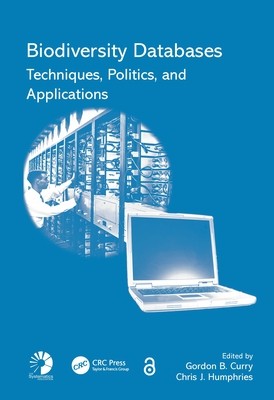
- We will send in 10–14 business days.
- Publisher: CRC Press
- ISBN-10: 0367389169
- ISBN-13: 9780367389161
- Format: 17.5 x 25.2 x 1.5 cm, minkšti viršeliai
- Language: English
- SAVE -10% with code: EXTRA
Biodiversity Databases (e-book) (used book) | bookbook.eu
Reviews
Description
Computing and database management has shifted from cottage industry-style methods -- the small independent researcher keeping records for a particular project -- to state-of-the-art file storage systems, presentation, and distribution over the Internet. New and emerging techniques for recognition, compilation, and data management have made managing data a discipline in its own right. Covering all aspects of this data management, Biodiversity Databases: Techniques, Politics, and Applications brings together input from social scientists, programmers, database designers, and information specialists to delineate the political setting and give institutions platforms for the dissemination of taxonomic information.
A practical and logical guide to complex issues, the book explores the changes and challenges of the information age. It discusses projects developed to provide better access to all available biodiversity information. The chapters make the case for the need for representation of concepts in taxonomic databases. They explore issues involved in connecting databases with different user interfaces, the technical demands of linking databases that are not entirely uniform in structure, and the problems of user access and the control of data quality. The book highlights different approaches to addressing concerns associated with the taxonomic impediment and the low reproducibility of taxonomic data. It provides an in-depth examination of the challenge of making taxonomic information more widely available to users in the wider scientific community, in government, and the general population.
EXTRA 10 % discount with code: EXTRA
The promotion ends in 24d.01:27:30
The discount code is valid when purchasing from 10 €. Discounts do not stack.
- Publisher: CRC Press
- ISBN-10: 0367389169
- ISBN-13: 9780367389161
- Format: 17.5 x 25.2 x 1.5 cm, minkšti viršeliai
- Language: English English
Computing and database management has shifted from cottage industry-style methods -- the small independent researcher keeping records for a particular project -- to state-of-the-art file storage systems, presentation, and distribution over the Internet. New and emerging techniques for recognition, compilation, and data management have made managing data a discipline in its own right. Covering all aspects of this data management, Biodiversity Databases: Techniques, Politics, and Applications brings together input from social scientists, programmers, database designers, and information specialists to delineate the political setting and give institutions platforms for the dissemination of taxonomic information.
A practical and logical guide to complex issues, the book explores the changes and challenges of the information age. It discusses projects developed to provide better access to all available biodiversity information. The chapters make the case for the need for representation of concepts in taxonomic databases. They explore issues involved in connecting databases with different user interfaces, the technical demands of linking databases that are not entirely uniform in structure, and the problems of user access and the control of data quality. The book highlights different approaches to addressing concerns associated with the taxonomic impediment and the low reproducibility of taxonomic data. It provides an in-depth examination of the challenge of making taxonomic information more widely available to users in the wider scientific community, in government, and the general population.


Reviews